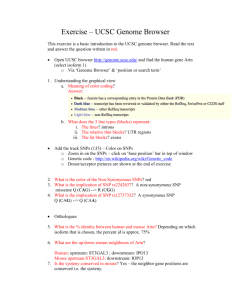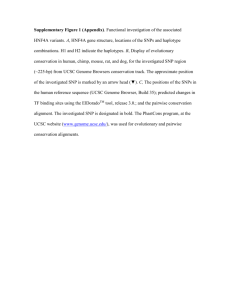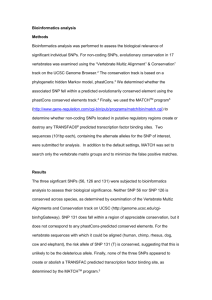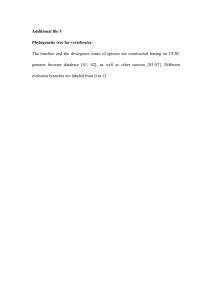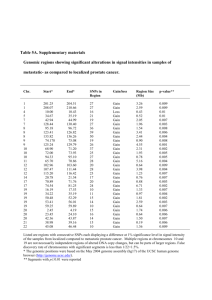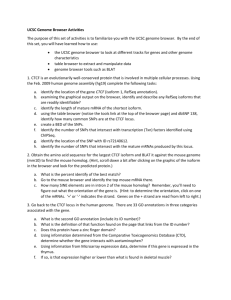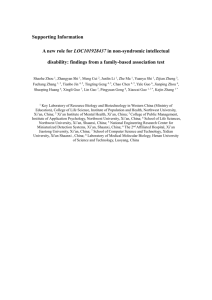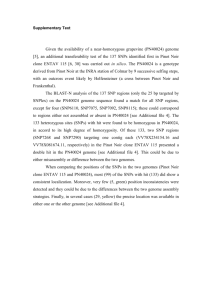Exercise * UCSC Genome Browser
advertisement
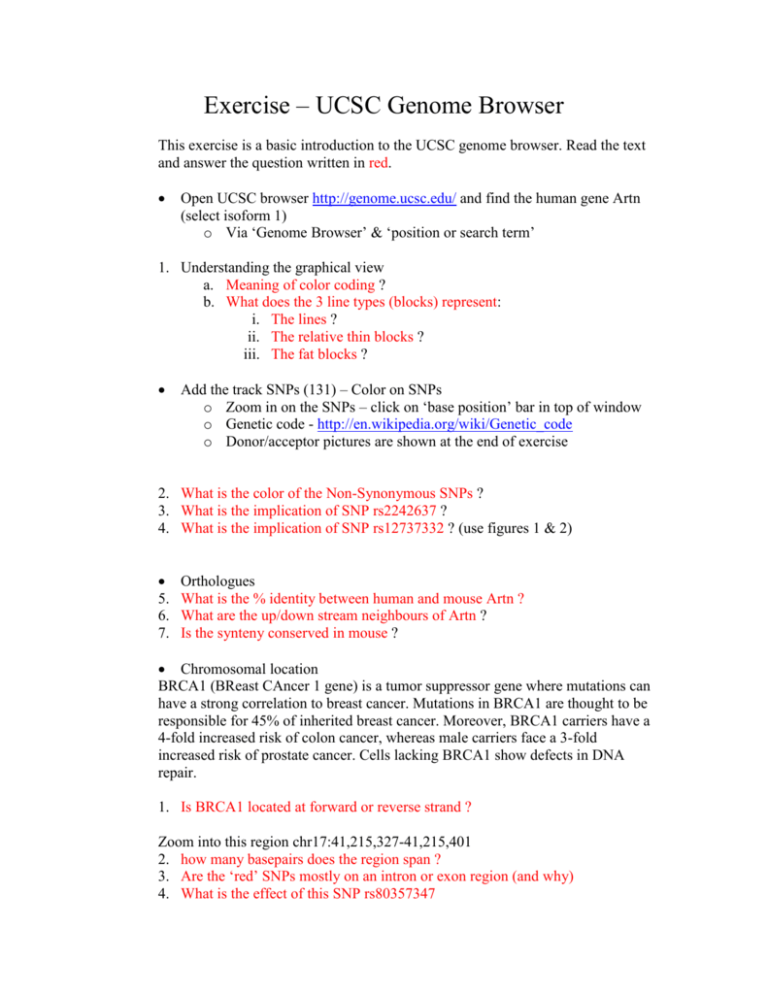
Exercise – UCSC Genome Browser This exercise is a basic introduction to the UCSC genome browser. Read the text and answer the question written in red. Open UCSC browser http://genome.ucsc.edu/ and find the human gene Artn (select isoform 1) o Via ‘Genome Browser’ & ‘position or search term’ 1. Understanding the graphical view a. Meaning of color coding ? b. What does the 3 line types (blocks) represent: i. The lines ? ii. The relative thin blocks ? iii. The fat blocks ? Add the track SNPs (131) – Color on SNPs o Zoom in on the SNPs – click on ‘base position’ bar in top of window o Genetic code - http://en.wikipedia.org/wiki/Genetic_code o Donor/acceptor pictures are shown at the end of exercise 2. What is the color of the Non-Synonymous SNPs ? 3. What is the implication of SNP rs2242637 ? 4. What is the implication of SNP rs12737332 ? (use figures 1 & 2) 5. 6. 7. Orthologues What is the % identity between human and mouse Artn ? What are the up/down stream neighbours of Artn ? Is the synteny conserved in mouse ? Chromosomal location BRCA1 (BReast CAncer 1 gene) is a tumor suppressor gene where mutations can have a strong correlation to breast cancer. Mutations in BRCA1 are thought to be responsible for 45% of inherited breast cancer. Moreover, BRCA1 carriers have a 4-fold increased risk of colon cancer, whereas male carriers face a 3-fold increased risk of prostate cancer. Cells lacking BRCA1 show defects in DNA repair. 1. Is BRCA1 located at forward or reverse strand ? Zoom into this region chr17:41,215,327-41,215,401 2. how many basepairs does the region span ? 3. Are the ‘red’ SNPs mostly on an intron or exon region (and why) 4. What is the effect of this SNP rs80357347 Donor/Acceptor sites Figure 1 shows logo for a small set of human Acceptor sites Figure 2 shows logo for a small set of human donor sites
